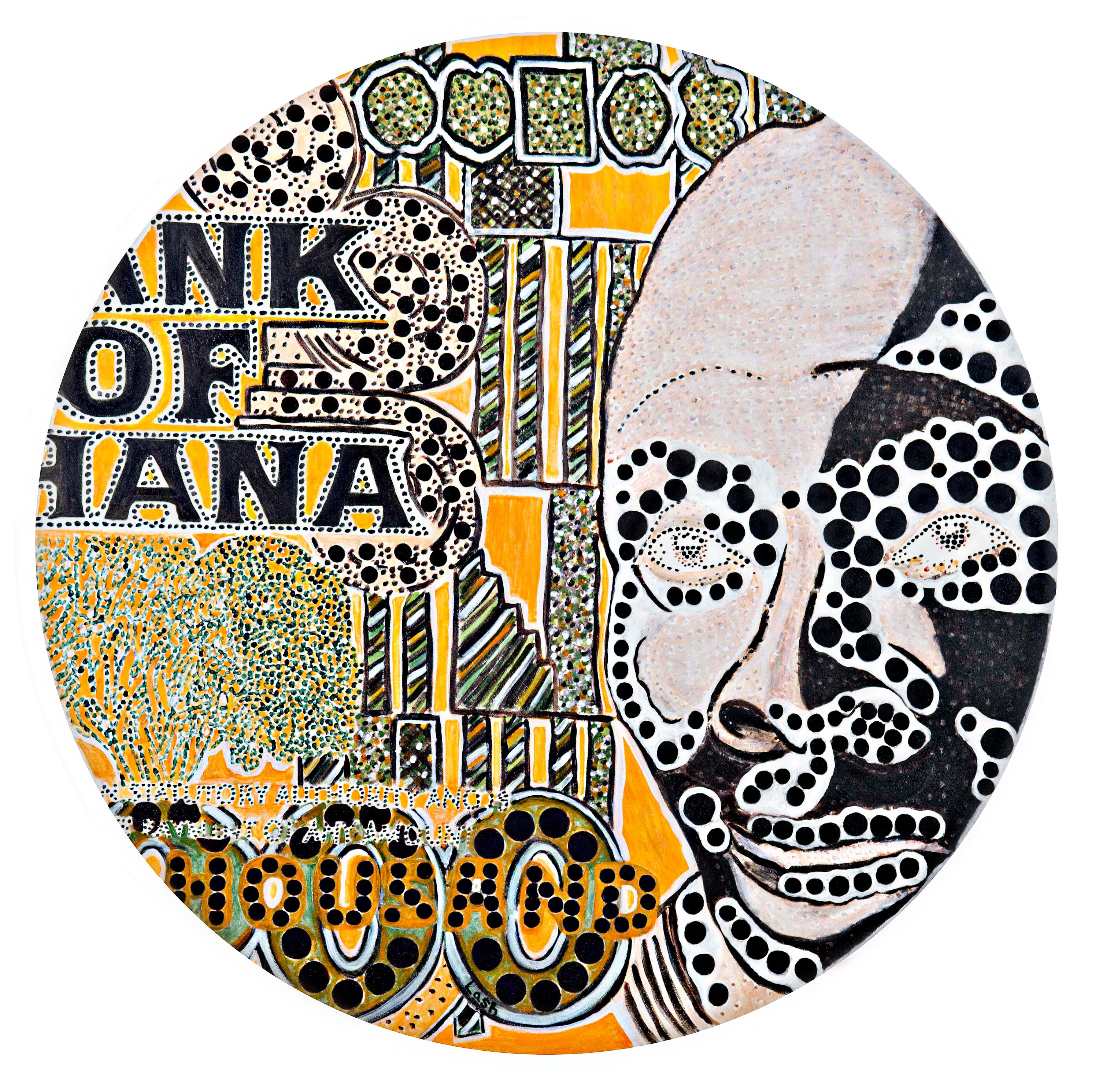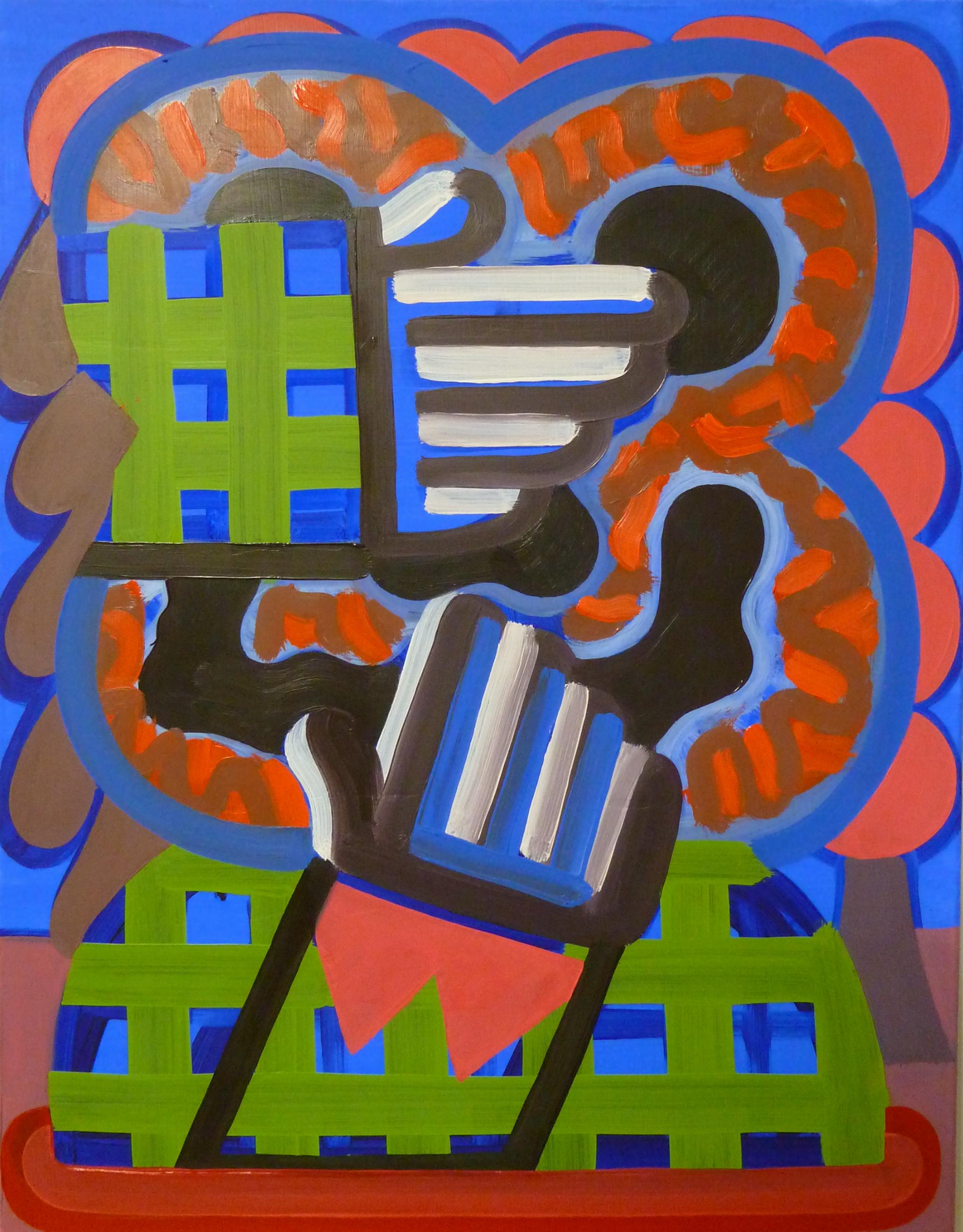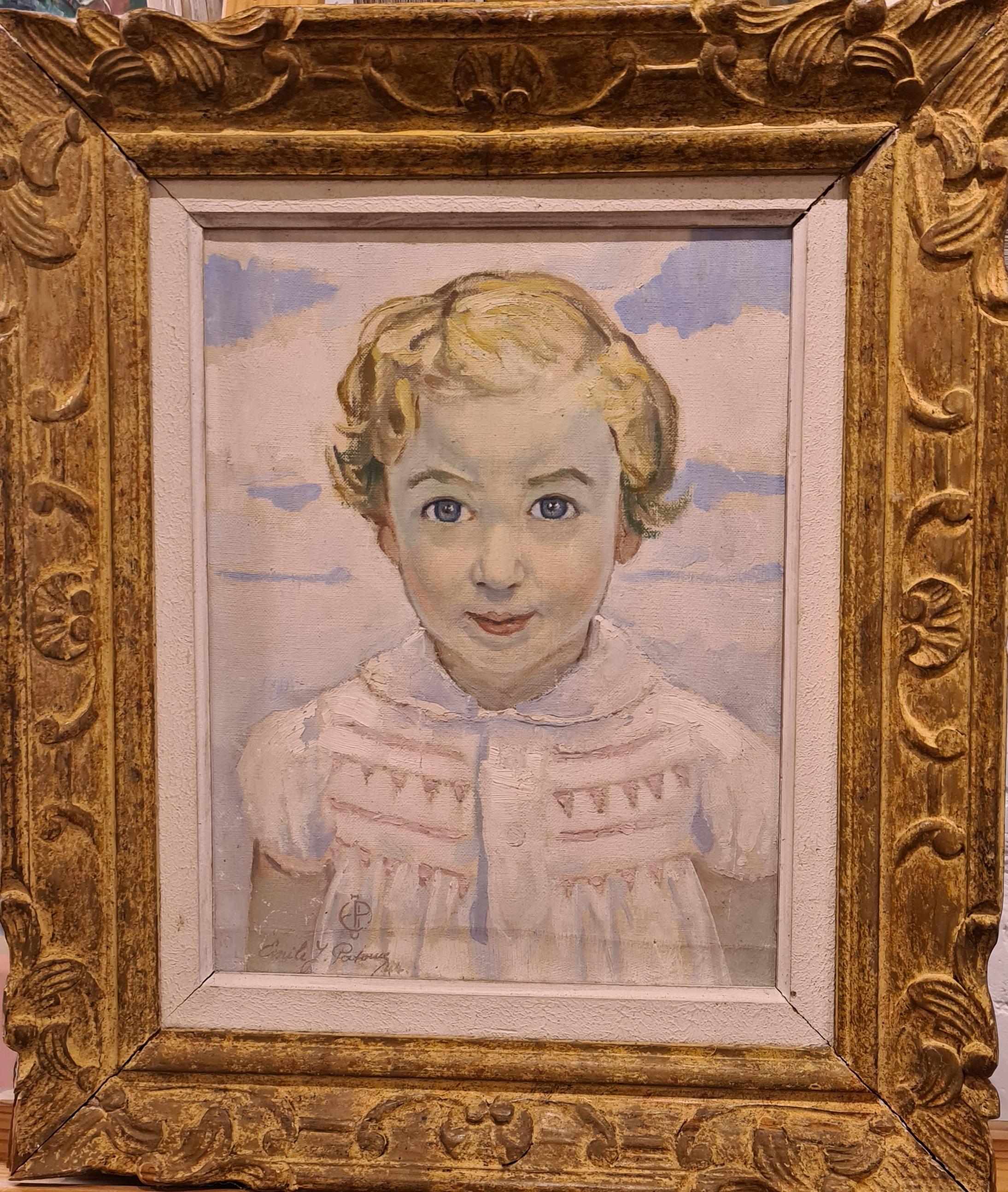Items Similar to Judaica Oil Painting 1945 Palestine Old Jewish Man Polish Israeli Artist
Want more images or videos?
Request additional images or videos from the seller
1 of 11
Ozer ShabatJudaica Oil Painting 1945 Palestine Old Jewish Man Polish Israeli Artist1945
1945
About the Item
Ozer Shabat 1978-1901
Ozer Shabbat was an Israeli painter, a resident of Haifa. Belonged to the Palestine Expressionist group of the late 1920s and early 1930s.
Shabbat was born in Wolbrom, Poland. At the end of the First World War he went to Holland for agricultural training in the framework of the HeChalutz movement, prior to his immigration to Palestine. In 1920 he immigrated to Eretz Israel and joined the Hulda group. Later he joined the Merhavia group and there he began painting. Because of his desire to study drawing, he left the group and moved to Jerusalem. In 1921, he wrote articles in the newspaper "HaSadeh" on the subject of agriculture and Dutch cheese.
Ozer Shabath won the first prize in a competition for the design of the Dutch Consulate's Garden in Jerusalem, enabling him to travel to Paris in 1923 to study painting. Until 1925 he studied painting at the Grande Chaumiere Academy in Paris. This year he returned to Eretz Israel and settled in Haifa, where he lived until his death.
In 1928 he participated for the first time in an exhibition of Eretz Israel artists at the Tower of David. Since then he has participated in all the general exhibitions of Israeli artists. In 1934, together with painters Menachem Shemi, Avraham Mohar, Zvi Meirovitch and others, he founded the Haifa Artists' Group. In 1935-36 he toured Europe and visited Italy, France and England. During his visit, he maintained contacts with artists from the Jewish school of Paris.
He has exhibited in several solo exhibitions, represented Israel in exhibitions in Europe and participated in international exhibitions in New York, Johannesburg and Zurich. In 1958 he represented Israel in the Venice Biennale. In 1960, Shabat, together with Elchanan Halpern he represented the Israeli Painters Association at the International Congress of Plastic Arts held in Vienna, Austria . In the 40s and 50s he focused on landscape pictures. However, despite the focus on the Israeli landscape, the approach is universal in the framework of the post-Impressionist painting school. In the 1960s, his approach changed and he turned more to abstraction. The abstract direction gradually evolved. The point of departure of the abstract approach is the architectural landscape, but this view loses its real character and becomes only imaginary: the buildings lose their real character and turn into exclusive geometric areas that are usually set against a dark background. Over time, architecture captured the lion's share of his paintings. Cities like Safed, Jaffa and Jerusalem are the subject of many pictures.
He taught painting and art at the schools of the kibbutzim in Ramat Yochanan and Kfar Yehoshua, in high schools in Haifa and in the IDF and Gordon seminars.
His paintings were purchased and are in the permanent collection of the Bezalel National Museum (now the Israel Museum), Haifa Museum of Art, Haifa Maritime Museum, Acre Municipal Museum.
Select Solo exhibitions
1936 - Nadler Gallery, Haifa.
1943 - The Tel Aviv Museum of Art.
1952 - Artists House, Haifa.
1953 - Bezalel House, Jerusalem.
1955 - Gallery in Geneva, Switzerland.
1955 - The Writers' Club, Haifa.
1959 - Artists House, Haifa.
1960 - Museum of Modern Art, Haifa.
1962 - Museum of Modern Art, Haifa.
1963 - Gallery 220, Tel Aviv.
1968 - The Municipal Museum of Beit Emanuel, Ramat Gan.
1979 - Memorial exhibition marking the first anniversary of his death, Haifa Auditorium, Haifa
1983 - Memorial Exhibition, Holon Museum of Art.
Awards
1944 - Shabtai Levy Prize, Mayor of Haifa.
1948 - Haifa Municipality Prize.
1950 Hermann Struck Prize.
1963 - Tiberias Municipality Prize.
Collective Annual Exhibition by Palestinian Artists, Art Gallery of the ''Habima'' Building, Tel Aviv
1944. Artists: Hermann Struck, Aaron Priver, Itzhak Danziger, Zvi Aldouby, Rico Blass, Moshe Castel, Mordechai Levanon, Genia Berger, Arie Orland, Aharon Avni, Lea Grundig and others.
- Creator:Ozer Shabat (1901 - 1978, Israeli, Polish)
- Creation Year:1945
- Dimensions:Height: 22.5 in (57.15 cm)Width: 19 in (48.26 cm)
- Medium:
- Movement & Style:
- Period:
- Condition:needs new mat, craquelure.
- Gallery Location:Surfside, FL
- Reference Number:1stDibs: LU38213152462
About the Seller
4.9
Platinum Seller
These expertly vetted sellers are 1stDibs' most experienced sellers and are rated highest by our customers.
Established in 1995
1stDibs seller since 2014
1,546 sales on 1stDibs
Typical response time: 1 hour
- ShippingRetrieving quote...Ships From: Surfside, FL
- Return PolicyA return for this item may be initiated within 3 days of delivery.
More From This SellerView All
- Large Judaica Jerusalem Oil Painting Israeli Jewish Rabbi Artist Tzvi RaphaelyBy Zvi RaphaeliLocated in Surfside, FLRabbi Portrait, Oil Painting Framed: 37.5 x 26. Canvas: 31.5 X 20 Bears original label verso from Safrai Gallery Lovely Israeli Chassidic Rabbi portrait oil painting, vibrant colorful painting. Hand signed in Hebrew and English. Done in a style similar and influenced by Marc Chagall. Svi Raphaely (also known as Tzvi Raphaeli...Category
20th Century Post-Impressionist Figurative Paintings
MaterialsCanvas, Oil
- Portrait of a French Woman Oil Painting Hungarian Master A. Biro French BeautyBy Akos BiroLocated in Surfside, FLCanvas measures 25" X 19" inches without the frame. Born in Nagykaroly, Hungary in 1911 (Transylvania, in 1919 it became Carei, Romania). His parents came from the gentry and trade...Category
20th Century Post-Impressionist Portrait Paintings
MaterialsCanvas, Oil
- Portrait of a Rabbi Israeli judaica Oil PaintingBy Nicky ImberLocated in Surfside, FLNicky Imber (Vienna, Austria, 1920 -1996) was a multidisciplinary Jewish artist best known for his sculptures on Jewish themes. Grand nephew of Naftali Herz Imber, author of the Isra...Category
Mid-20th Century Post-Impressionist Figurative Paintings
MaterialsCanvas, Oil
- Rare Hungarian Jewish Rabbi Judaica Oil Painting PortraitBy Lajos PolczerLocated in Surfside, FLRare Pre World War II (Pre Holocaust) Judaica Art. European Judaic art from this period is exceedingly rare. Polczer was an Hungarian artist, his foundations of painting were taught by a painter Bertalan Karlovszky. His works were exhibited in the National Salon and the Art Hall from 1928. His works are held by the Hungarian National Gallery. In his later years he worked in the United States, he was working in New Orleans, Louisiana in the late 1960s. Known for his Jewish genre scenes, Chess scenes and other early 20th Century salon style nude paintings. In the tradition of Moritz Oppenheim...Category
Mid-20th Century Post-Impressionist Figurative Paintings
MaterialsOil
- Judaica Oil Painting Chassidic Jewish Rabbi Holding A Sefer Torah ScrollBy Mark SiegbandLocated in Surfside, FLJudaic oil painting by Krakow, Poland born artist Mark Siegband. Signed and framed, An elderly Hasidic rabbi holding a Torah. He is one of many great Jewish Polish artists that inclu...Category
Mid-20th Century Post-Impressionist Figurative Paintings
MaterialsOil
- Modernist Rabbi Oil Painting Judaica Jewish Synagogue Scene Paris. Lichtenstein.By Isaac Lichtenstein 1Located in Surfside, FLFramed 26 x 13 image 20 x 6.5 inches. YITSKHOK LIKHTENSHTEYN (ISAAC LICHTENSTEIN) (1888-1981) (Icchok, Izrael) was born in Lodz, Poland. Initially he was studying at Yehuda Pen school in Witebsk. In the same school where young Marc Chagall started to paint his shtetl Jews, Jewish neighbourhoods and personages. As many young Jewish children who decided painting to be their passion Isaac moved to Paris where he was one of the co-founders of Machmadim - a group of Jewish artists (mostly émigré from Eastern Europe) who dedicated their art to traditional Jewish themes. Later Isaac Lichtenstein studied with Boris Schatz and painted at Bezalel, Jerusalem. Until age seven he was raised in Warsaw; later, when his father received a position with Poznański, he lived with his parents in Lodz. There he studied in a state public school. He demonstrated talent for painting while still quite young, and in 1906 he began to attend the Cracow art academy, before going on to study painting in Rome, Florence, and Munich. In 1908 he entered the Bezalel Art School in Jerusalem. In 1910 he returned to Cracow, lived for a short time in Munich, 1911 in Paris, 1912-1913 again in the land of Israel, and in 1914 he returned to Paris, that very year setting off for the United States. He lived in New York during WWI, where he became part of Jewish literary and artistic circles, and contributed as a graphic artist to a variety of Jewish publications, among them: M. Basin’s Antologye (Anthology), the collection Velt ayn, velt oys (World in, world out), and designed frontispieces, little vignettes, and letters for Yiddish-language books. In 1916 he also began to write and published articles on the plastic arts in: Tsukunft (Future) in New York; the collection Shriften (Writings), vol. 6; Onheyb (Beginning), edited by Z. Vaynper; Morgn-zhurnal (Morning journal); Der amerikaner (The American); Forverts (Forward); and Di tsayt (The times). He did journalistic work also for M. F. Seidman’s correspondence bureau in New York. In 1918 he departed with the Jewish Legion for Israel. In 1920 he came to London, was demobilized there, and was a contributor to the journal Renesans (Renaissance), edited by Leo Kenig, and to the daily newspaper Di tsayt, edited by Morris Meyer. In 1924 he returned to Poland, exhibited his drawings in Warsaw, Lodz, Vilna, and other cities, gave speeches on art (general and Jewish), and published work in: Haynt (Today), Moment (Moment), Folkstsaytung (People’s newspaper), and Literarishe bleter (Literary leaves)—in Warsaw; Unzer lebn (Our life) in Grodno; Voliner lebn (Volhynia life); Nayer folksblat (New people’s newspaper) in Lodz; and elsewhere. He also published impressions from his travels and memoirs of the Jewish Legion in Haynt. He was part of the loose association of émigré artists known collectively as the École de Paris, the majority (among them Marc Chagall, Isaac Dobrinksy, Henri Epstein...Category
Early 20th Century Post-Impressionist Figurative Paintings
MaterialsOil, Board
You May Also Like
- Mask, bold graphic colorful pointillist patterns text global currencyLocated in Brooklyn, NYGhanaian 20000 Cedi Note, Oil On Canvas, 48" Round Jenna Lash specializes in global currency featuring animals, portraiture in a neo pointillist styleCategory
2010s Pointillist Figurative Paintings
MaterialsCanvas, Oil
- No Foe Shall Gather Our Harvest bright pointillist patterns text global currencyLocated in Brooklyn, NYNo Foe Shall Gather Our Harvest Australian 10 Dollar Note, Acrylic On Canvas, 60" x 48" Jenna Lash specializes in global currency featuring animals, portra...Category
2010s Pointillist Figurative Paintings
MaterialsCanvas, Oil
- "Touching", oil paint, portrait, hands, face, intimacy, vector, human, senseLocated in Toronto, Ontario"Touching" is a remarkable oil painting on canvas measuring 18" tall by 14" wide. For all it's modest size, it throws several punches above its weight. The title Touching could be a ...Category
21st Century and Contemporary Fauvist Portrait Paintings
MaterialsCanvas, Oil
- Alice, Post Impressionist Portrait of a Young Girl.By Emile Jean PatouxLocated in Cotignac, FRMid century oil on canvas portrait of a young girl in period dress, in fine gilt frame. Signed in full, dated 1944 and with artist's monogram. Emile Patoux (Belgian 1893-1985) studi...Category
Mid-20th Century Post-Impressionist Portrait Paintings
MaterialsOil, Canvas
- The Japanese, 1970. Oil on canvas, 100x70 cmBy Jadviga ZjilvinskaLocated in Riga, LVJadviga Žilvinska (1918-2010) was born in Tallinn. She grew up in Liepāja, where her great interest in art began and strengthened, which led the young artist to study at the Art Aca...Category
20th Century Fauvist Portrait Paintings
MaterialsCanvas, Oil
- Farming Family on a Sunday Morning, Oil on Canvas. Framed and SignedLocated in brussel, BEThe Namur painter and engraver, Louis Decoeur (1884-1960) became a member of “L’Effort” around 1910. This artist’s association provided a free studio for painters in Brussels, on the...Category
20th Century Fauvist Figurative Paintings
MaterialsCanvas, Oil




